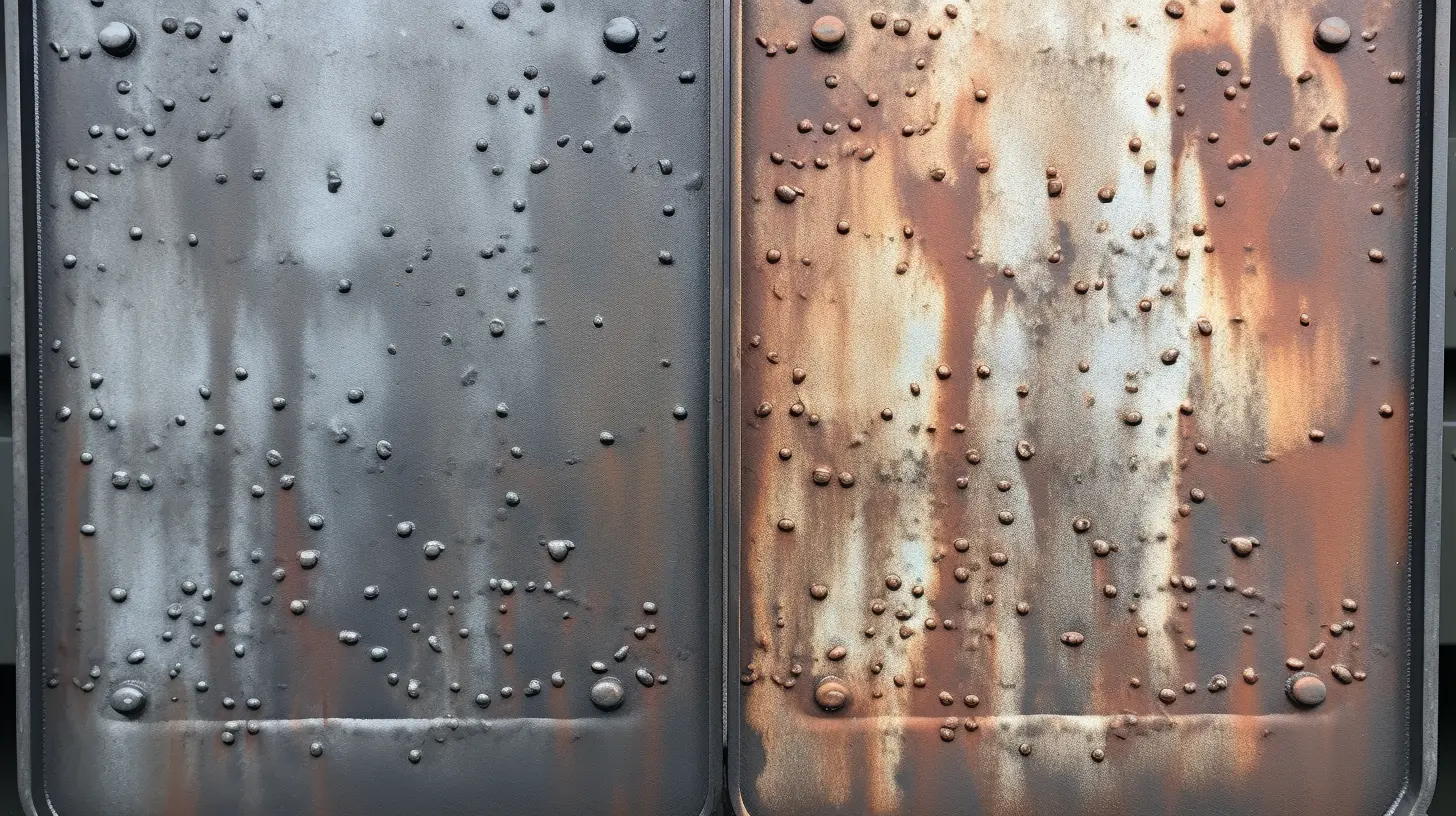Rust on metal surfaces is a common headache, affecting 75% of households.
But fear not, I’ve got the ultimate guide on how to clean rust from metal without breaking a sweat.
From everyday household items to specialized products and techniques, I’ll cover it all.
Whether it’s your trusty tools or beloved outdoor furniture that’s fallen victim to rust, I’ve got you covered with practical solutions that won’t burn a hole in your pocket. So let’s roll up our sleeves and bid farewell to stubborn rust stains for good.
I am discussing Three methods of cleaning rust;
1. Home Remedies for Rust Removal
2. Mechanical Rust Removal Techniques
3. Chemical Solutions for Rust Removal
So you can read whichever suits you the best and learn something new today!
KeyTakeaways
- Rust forms when iron or steel encounters moisture and oxygen, a process accelerated by salt or acids.
- Rust prevention involves regular cleaning, drying, applying protective coatings like paint or varnish, and storing items in dry environments.
- To Clean rust from metals you can use home remedies like baking soda, lemon and salt, vinegar, and citric acid powder are effective for rust removal.
- Use Mechanical rust removal techniques including grinding and sanding, with safety precautions and proper ventilation necessary.
- Post-rust removal protection involves applying metal primer, outdoor paint, and a clear topcoat.
- Specific surface cleaning tips include regular maintenance of garden tools, using concrete-specific rust removers, and regular cleaning of metal furniture and decorative items.
1. Understanding Rust
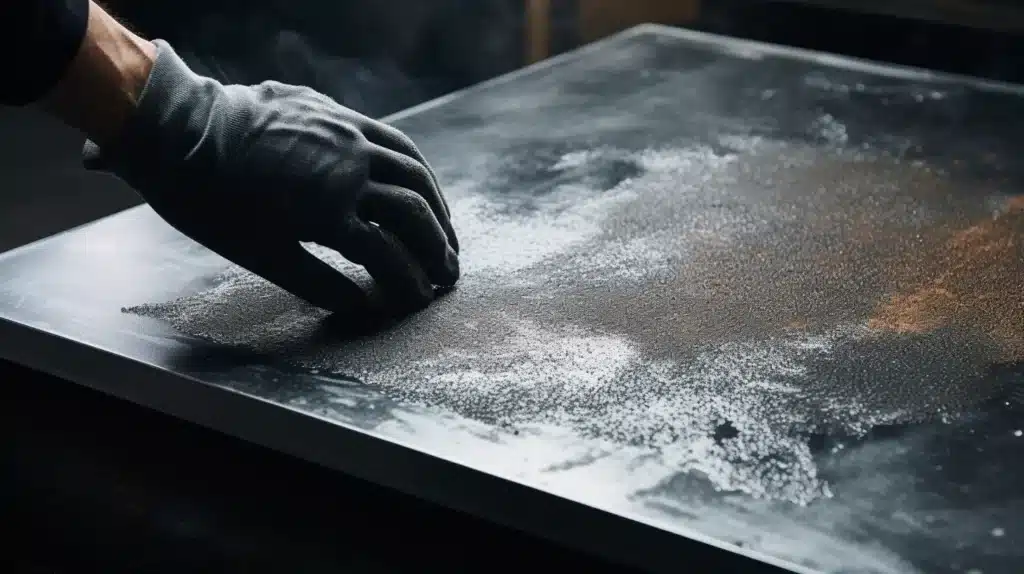
Rust forms when iron or steel comes into contact with oxygen and moisture.
This natural chemical reaction, known as oxidation, can be accelerated by the presence of salt or acidic substances.
For example, leaving a metal object outside during rainy weather can lead to rust formation due to the combination of water and oxygen in the air, as well as aluminum oxidation.
1. Tarnish vs rust
Unlike rust, tarnish refers to the discoloration of various metals and is not specific to iron or steel.
While both rust and tarnish can be removed using different cleaning methods, it’s essential to understand that they affect different types of metals.
For instance, silver, brass, and copper are susceptible to tarnishing but may not necessarily rust like iron or steel.
2. Preventing Rust
Preventing rust involves regular cleaning and drying of metal surfaces after exposure to moisture.
Applying a protective coating such as paint or varnish creates a barrier against further oxidation.
Storing metal objects in dry environments also significantly reduces the chances of rusting over time.
I find that wiping down my gardening tools with a dry cloth after use helps prevent them from developing rust.
It’s important for me to keep them clean before storing them away in my shed.
2. Home Remedies for Rust Removal
1. Baking Soda Method
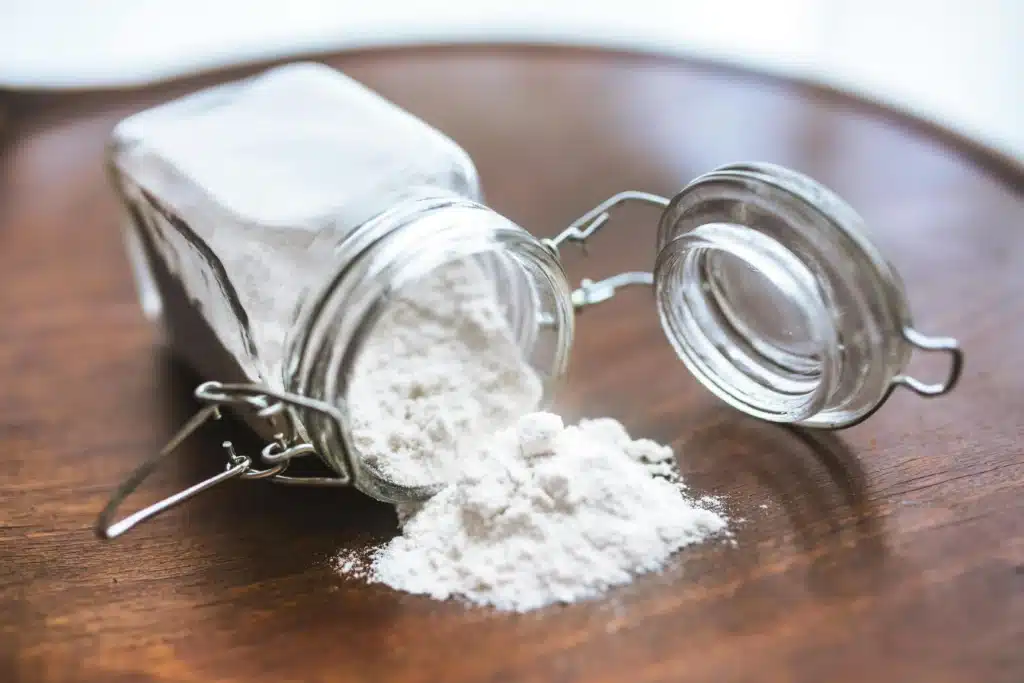
Mixing baking soda with water to create a paste is an effective way to remove rust from metal.
The mild abrasive properties of baking soda help scrub away the rust without damaging the metal.
This method is not only efficient but also affordable, as baking soda is readily available in most households.
For instance, I once used this method to clean the rust off my old bicycle’s handlebars.
However, for quick actions you can also use our chemicals to help you remove rust quickly
2. Lemon and Salt
Combining lemon juice with salt creates a powerful natural rust remover.
The citric acid in lemon juice helps dissolve the rust, while salt acts as an abrasive agent for scrubbing.
This technique works wonders for smaller metal objects that can be soaked in the lemon-salt solution.
Last summer, I tried using this mixture on some rusty gardening tools, and it worked like magic!
3. Vinegar Technique
Soaking rusty items in vinegar overnight can effectively loosen the rust for easier removal.
The acetic acid in vinegar reacts with the rust, making it easier to scrub off. If you’re dealing with stubborn rust, heating the vinegar before soaking can enhance its effectiveness significantly.
4. Citric Acid Powder
Citric acid powder is another excellent option for removing rust from metal surfaces.
It can be mixed with water to create a paste or used as a soaking solution for heavily affected items such as tools or outdoor furniture pieces.
3. Mechanical Rust Removal Techniques
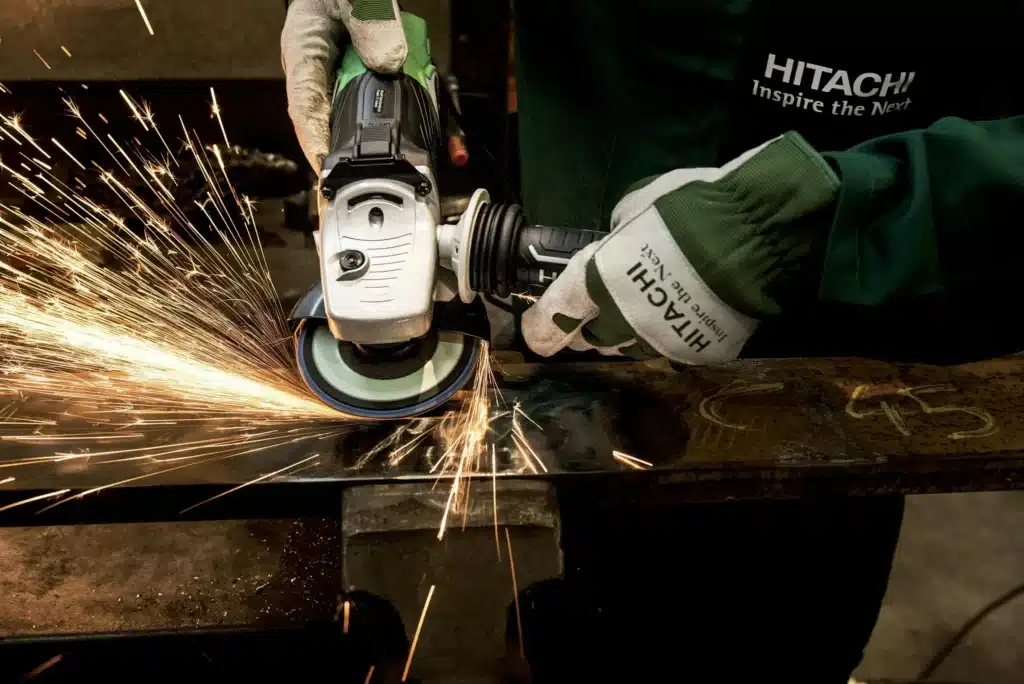
1. Grinding and Sanding
Selecting the right abrasives is crucial. For light surface rust, fine-grit sandpaper or steel wool works effectively.
However, for heavy rust or larger areas, coarser abrasives like wire brushes are more suitable. Always consider the type of metal and the extent of rust before choosing your abrasive.
Safety measures are essential when using mechanical methods to remove rust from metal.
It’s important to wear protective gloves and goggles while working with grinding and sanding tools to prevent any injuries.
Ensure that you work in a well-ventilated area to avoid inhaling fumes from cleaning solutions.
I find that taking these safety precautions not only protects me but also ensures a smoother process when removing rust from metal surfaces.
2. Scouring Off Rust
Scouring off loose rust particles from the metal surface can be done using a scrub brush or an abrasive pad.
Applying gentle pressure along with circular motions helps effectively remove the rust without damaging the metal underneath.
After scouring, make sure to rinse the metal thoroughly to eliminate any residue left behind and clean aluminum or any other metal surface.
My personal experience has taught me that rinsing off after scouring is crucial as it prevents any remaining loose particles from causing further damage over time.
4. Chemical Solutions for Rust Removal
1. Aluminum Brightener
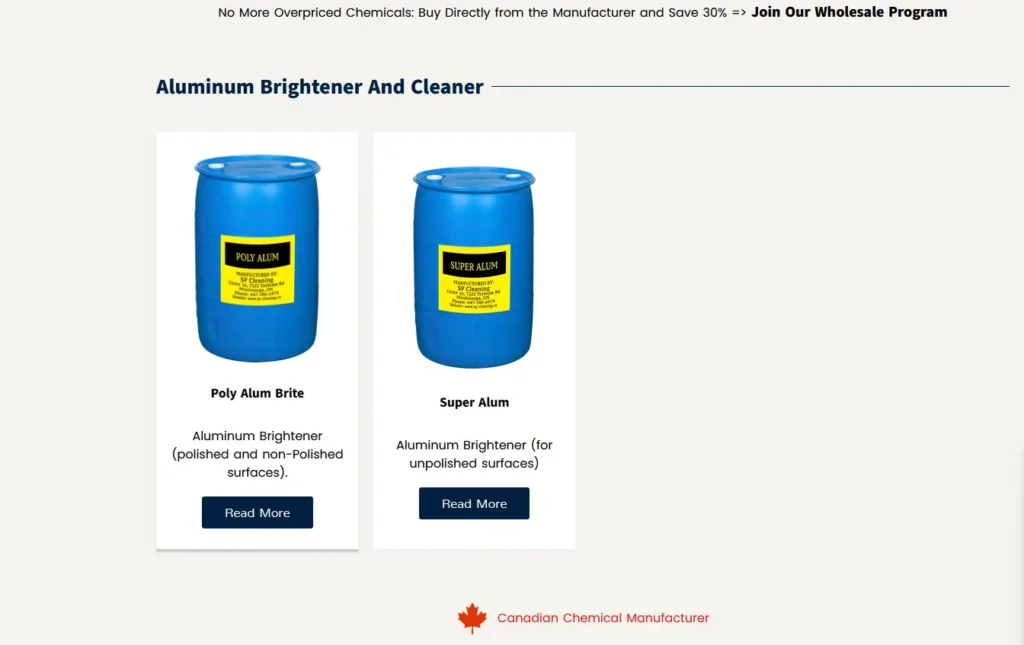
Aluminum brightener is a powerful solution for removing rust stains from aluminum surfaces. It contains phosphoric acid, which reacts with the rust and breaks it down effectively.
When using aluminum brightener, it’s crucial to follow the manufacturer’s instructions carefully to ensure safe and proper application.
By doing so, you can effectively restore the appearance of your aluminum items by eliminating unsightly rust stains.
2. Degreasing Metals
Before applying any rust removal method, it’s essential to thoroughly degrease the metal surface. This step ensures that there are no oil, grease, or dirt residues that could interfere with the effectiveness of the rust removal process.
Using degreasers or dish soap can help eliminate any contaminants present on the metal surface.
A clean surface not only promotes better adhesion of rust removal solutions but also enhances their overall efficiency in restoring the metal’s original condition.
I’ve found that when dealing with rusty metal objects at home, using chemical solutions like aluminum brightener has been incredibly effective in restoring their appearance.
Ensuring that I thoroughly degrease the metal surfaces with degreasers before applying any rust removal method has always yielded better results.
5. Protecting Metal Surfaces Post-Rust Removal
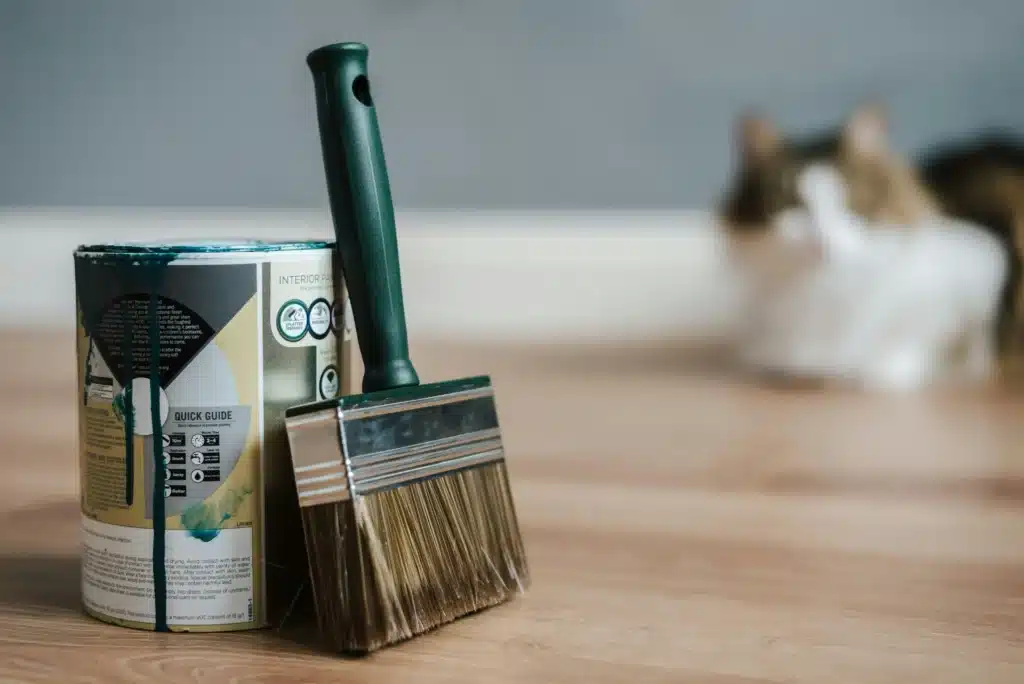
1. Prime and Paint
After cleaning rust from metal, it’s crucial to apply a primer specifically designed for metal surfaces. This primer creates a protective layer that prevents future rust formation.
Once the primer is dry, you can then apply paint suitable for outdoor use to further protect the metal.
The primer acts as a shield against moisture and other elements that could lead to rust reformation.
It provides an extra barrier between the metal surface and environmental factors, ensuring long-lasting protection.
For example, I recently restored an old garden bench by removing rust with a wire brush, applying a metal primer, and finishing with outdoor spray paint in my favorite color.
2. Topcoat Application
Applying a clear topcoat over painted metal surfaces adds an additional layer of protection against rust. When choosing a topcoat, opt for one that is resistant to UV rays and moisture. Regularly inspect the topcoat for any signs of wear or damage to ensure continuous protection.
The clear topcoat not only enhances the appearance of the painted surface but also acts as a shield against harmful UV rays and moisture exposure.
Personally, I find that using these protective measures not only restores the beauty of rusty items but also ensures their longevity by safeguarding them from future corrosion.
6. Cleaning Rust Off Specific Surfaces
1. Garden Tools
Garden tools, like shovels and trowels, are often exposed to moisture and soil, making them susceptible to rust.
To prevent rust formation, it’s essential to clean garden tools after each use. After cleaning, store them in a dry place away from dampness. Applying a thin layer of oil or using a rust-resistant coating can provide an extra layer of protection against rust.
Regular maintenance is key to keeping garden tools free from rust stains.
For instance, I always make sure to wipe down my gardening equipment with a dry cloth after every use before storing them in the shed. This simple habit has helped me keep my tools free from unsightly rust.
2. Concrete Surfaces
Rust stains on concrete surfaces can be quite stubborn and challenging to remove. Using a specialized rust remover formulated for concrete is crucial for effective stain removal.
Once the remover is applied, scrubbing the stained area with a stiff brush helps loosen the rust particles embedded in the concrete pores.
Rinsing thoroughly afterwards ensures that all traces of both the stain and remover are removed.
I’ve found that creating a paste by mixing baking soda with water and applying it directly onto the rusty spots on my outdoor patio has been an effective DIY method for removing small rust stains without damaging the concrete surface.
3. Metal Objects
Various metal objects such as furniture or decorative items can develop rust over time if not properly maintained.
Regular cleaning plays an important role in preventing rust formation on these items. Utilizing appropriate methods for removing existing rust based on the size and material of the object is also crucial in preserving their appearance and structural integrity.
When dealing with large metal objects like outdoor furniture, I find that using a combination of vinegar and aluminum foil works wonders in removing light surface corrosion caused by moisture exposure.
7. Non-Rusting Metals and Their Use
There are various options available in the market. You can explore different commercial rust removers and aluminum cleaner designed specifically for this purpose.
It’s essential to conduct thorough research before making a purchase, as not all products may be suitable for your specific requirements.
Before selecting a rust remover, consider the type of metal surface you need to clean.
For instance, if you’re dealing with delicate or intricate metalwork, you’ll want to choose a product that is gentle and won’t cause damage.
On the other hand, if you’re working with larger or more heavily rusted surfaces, a stronger formula might be necessary.
Researching different products and reading customer reviews can provide valuable insights into their effectiveness on various types of metals. Some products may work better on certain metals than others, so it’s crucial to find one that aligns with your needs.
8. Maintaining Metal Surfaces
1. Best Practices
Always test any rust removal method on a small, inconspicuous area first. This helps ensure that the method is effective without causing damage.
Following safety instructions provided by manufacturers of cleaning products is crucial for protecting yourself and the metal surface.
By doing so, you can minimize potential hazards and achieve optimal results. To prevent rust formation, it’s essential to keep metal surfaces well-maintained at all times.
Regular maintenance significantly reduces the likelihood of rust developing.
Implementing preventive measures such as protective coatings or storing metal objects in dry environments goes a long way in keeping metal surfaces free from rust.
These measures act as barriers against moisture and other elements that contribute to rust formation. For instance, applying a coat of paint or varnish on metal furniture or equipment provides an extra layer of protection against corrosion.
2. Keeping Metal Rust-Free
Regularly inspecting metal surfaces for any signs of rust or corrosion allows you to catch any issues early before they worsen. Early detection enables prompt action, preventing minor surface rust from spreading further and causing more extensive damage.
By addressing areas with surface rust promptly, you can effectively stop its progression and preserve the integrity of the metal.
Personal Experience: I once neglected my garden tools during winter, only to find them covered in unsightly rust come springtime! Since then, I’ve made it a habit to regularly check for signs of corrosion on all my gardening equipment.
9. Final Remarks
After exploring various methods for removing rust from metal surfaces and learning about different types of metals, it’s clear that preventing rust is just as important as removing it.
Whether using natural remedies or chemical solutions, the key is to act promptly and consistently to protect our metal belongings.
By understanding the nature of rust and the characteristics of different metals, we can take better care of our possessions and ensure they last longer.
So, next time you spot a hint of rust on your metal items, don’t wait around. Take action right away to prevent further damage.
Remember, a little maintenance today can save you from costly replacements tomorrow. Let’s show some love to our metal belongings and keep them shining for years to come!
10. Frequently Asked Questions
1. How does rust form on metal surfaces?
Rust forms when iron or metals containing iron are exposed to moisture and oxygen, causing a chemical reaction known as oxidation. This process weakens the metal and creates the reddish-brown flaky substance we recognize as rust.
2. What are some effective home remedies for removing rust from metal?
One effective home remedy is creating a paste using baking soda and water, which can be applied to the rusty surface and scrubbed off after a few hours. Another method involves using vinegar or lemon juice with salt to create a natural rust-removing solution, acid wash.
3. Are there any non-rusting metals that can be used as alternatives?
Stainless steel, aluminum, copper, and brass are examples of non-rusting metals that can serve as alternatives in situations where resistance to corrosion is essential. These materials offer durability and aesthetic appeal while minimizing the risk of rust formation.
4. How can I protect metal surfaces from future rusting after removal?
Applying a protective coating such as paint, wax, or oil-based products helps prevent exposure to moisture and oxygen. Regular maintenance like cleaning and drying metal surfaces also contributes significantly to preventing future rust formation.
5. What mechanical techniques can be used for removing stubborn rust from metal?
Mechanical methods such as sanding with sandpaper or using wire brushes provide effective ways to physically remove stubborn layers of rust from metal surfaces. Power tools like grinders equipped with abrasive discs may also be employed for heavy-duty restoration tasks.

